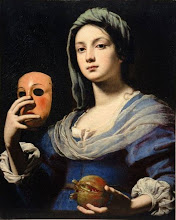O Wealth-giver,
Queen of the Gods,
Lady Hermouthis,
Omnipotent
Good Fortune,
Greatly Renowned Isis,
Exalted Deity,
Highest Discoverer of all life.
Many are the miracles You have performed so that mankind could exist,
and morality be established for all.
You taught us customs so that justice might in some measure prevail,
You taught us skills so that human life might be comfortable,
And You found the blossoms that produce nourishing fruit.
Because of You heaven and the whole earth have their being,
And the gusts of the winds, and the sun with its sweet light.
By Your power the channels of the Nile are filled, every one,
At the harvest season, and its turbulent water is poured out
On the whole land so that produce may be unfailing.
All mortals who live on the boundless earth:
Thracians, Greeks and Barbarians,
Express Your fair Name, a Name greatly honored among all,
Each speaks in his own language, in his own land.
The Syrians call You: Astarte, Artemis, Nanaia,
The Lycian tribes call You: Leto, the Lady,
The Thracians also name You as Mother of the gods,
And the Greeks (call You) Hera of the Great Throne, Aphrodite,
Hestia the goodly, Rheia and Demeter.
But the Egyptians call You ‘Thiouis’ (because they know) that You, being One, are all the goddesses invoked by the races of men.
Mighty One, I shall not cease to compose hymns to Your great Power,
Deathless Saviour, many-named, mightiest Isis,
Saving from war, cities and all their citizens:
Men, their wives, possessions, and children.
Those who are bound fast in prison, in the power of death,
Those who as are in pain through long, anguished, sleepless nights,
All who are wanderers in a foreign land,
Those who sail on the Ocean in winter,
When men may be destroyed, and their ships wrecked and sunk.
All of these are saved if they pray that You be present to help.
Hear my prayers, O One whose Name has great Power;
Prove Yourself merciful to me, and free me from all distress.
Isidorus, c 100 BCE




















-734731.jpg)
































